Haute Cuisine, California-Moroccan Style
BY ROY STRASSMAN AND ROB SIDON
At the close of business in the Financial District the harried pace abates, the busy thoroughfares decrescendo and—behold—like an oasis at the corner of New Montgomery and Minna, Mourad beckons.
During a two-year feat of urban alchemy, the historic brick Pacific Telephone building was hollowed out and polished like a genie’s bottle, making space for one of San Francisco’s most exotic eateries. The modern glass door is adorned with a massive crosscut century-old tree root—a nod to the mixture of old and new.
Mourad is the namesake of Marrakesh-born chef Mourad Lahlou, a food celebrity who won the Food Network’s Iron Chef America competition and is author of Mourad: New Moroccan. He also created Aziza in the Richmond District. Both his restaurants boast the prestigious Michelin star rating. Lahlou states, “I am not even sure I would call it a Moroccan restaurant anymore.” Perhaps a good description is “California-Moroccan haute cuisine.”
Let’s preface by saying that Mourad already enjoys stellar reviews, and ours is no exception. Here’s how it went down for us: we began with cocktails accompanied by harissa-toasted pecans and Castelvetrano olives in a preserved lemon red-pepper sauce. The diverse cocktail menu includes a vast number of unusual ingredients and exotic liquors. Our drinks were tasty, strong, and lively—with suggestive names such as Pollen + Pepper, Curry + Cardamom, Clove + Hibiscus.
At Mourad the food is served three ways: à la carte, family-style (as is the custom in Morocco), or the nine-course tasting menu. We opted for the latter, including an assortment of creative beverage pairings.
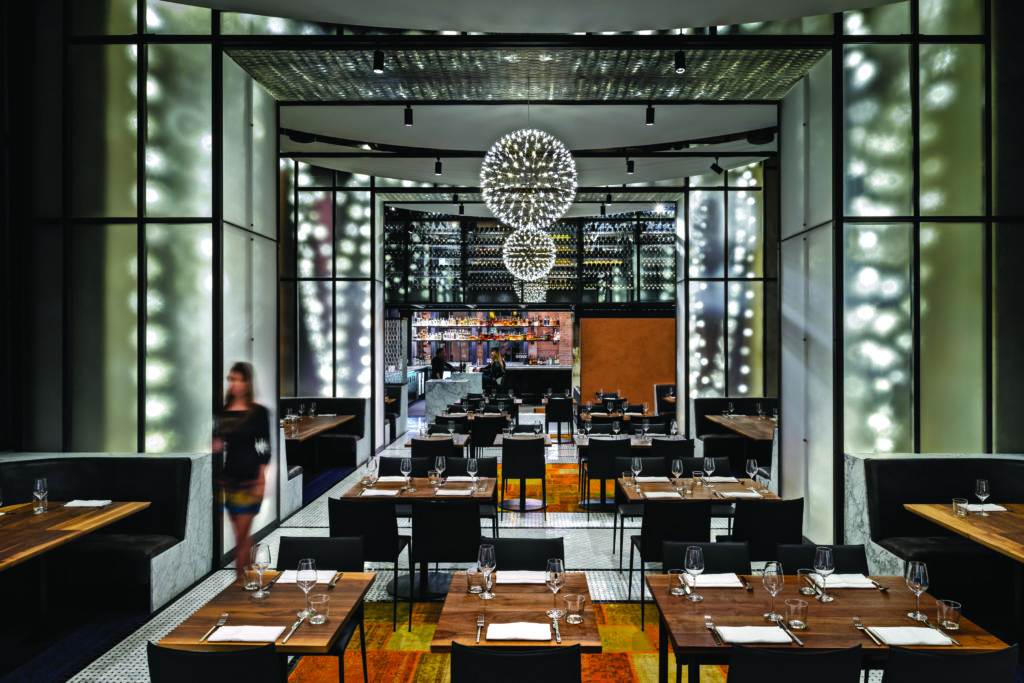
» Mourad
140 New Montgomery Street.
Nine-course tasting menu, $120;
beverage pairing, $85.
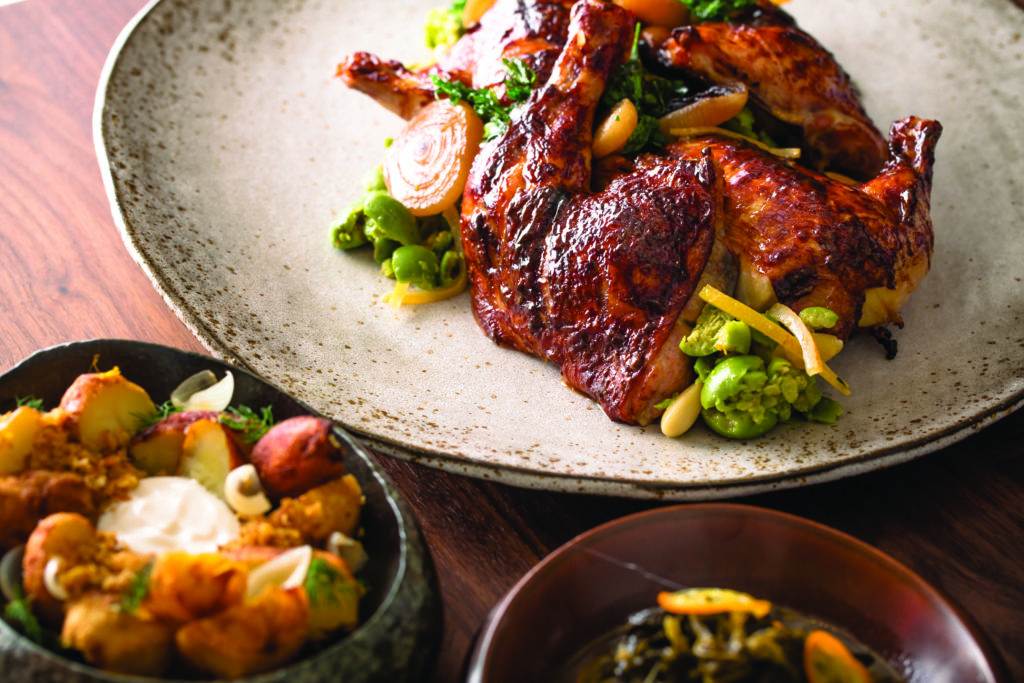
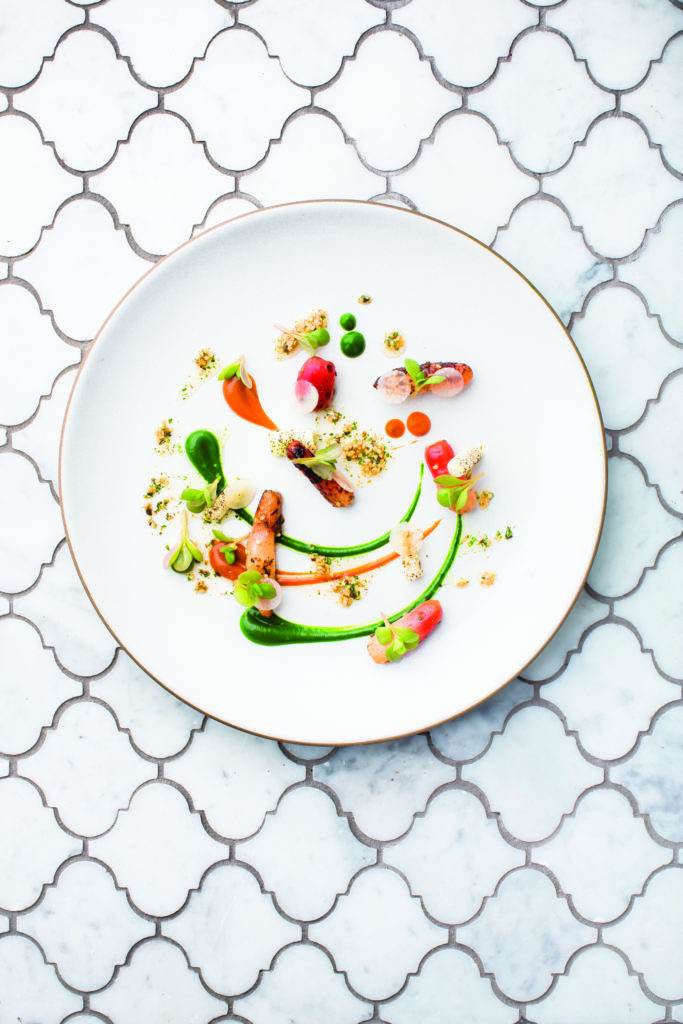
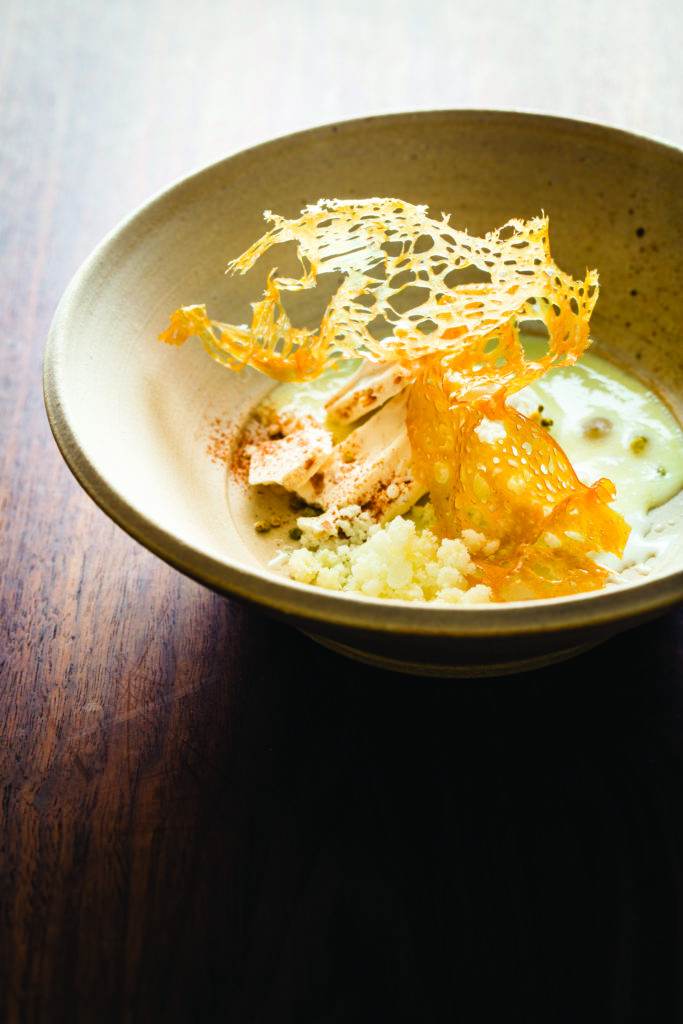
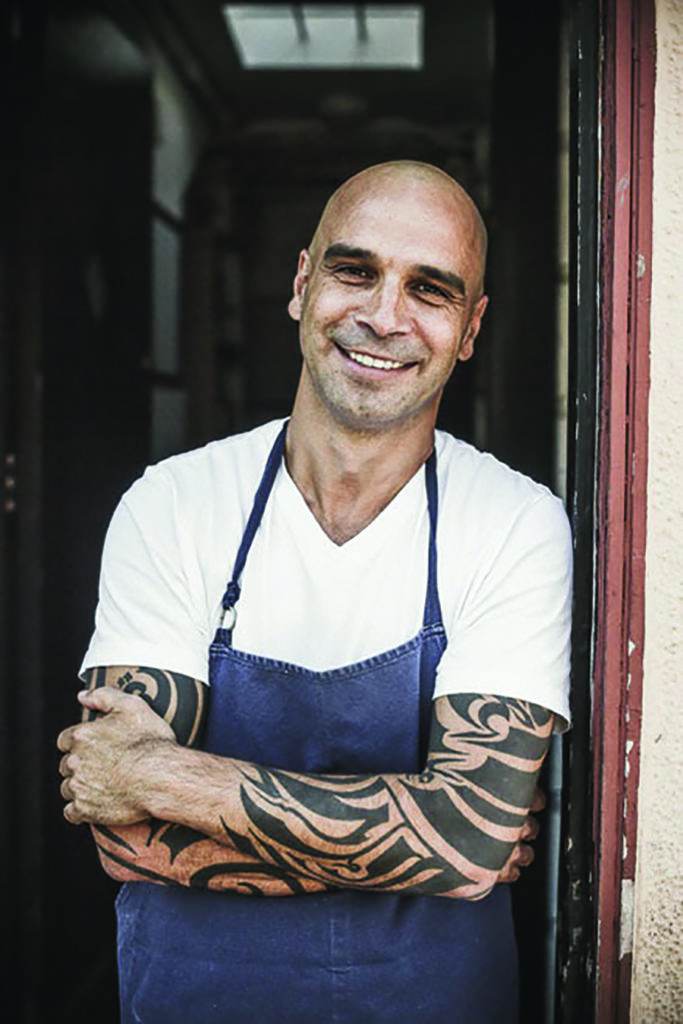
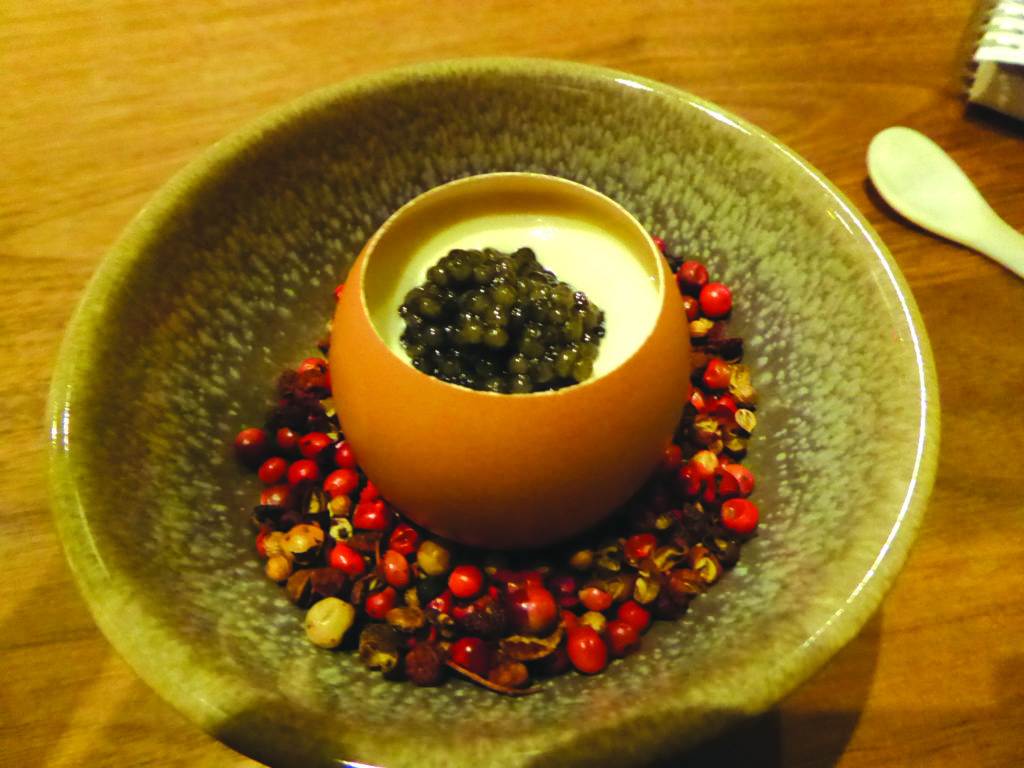
The first course consisted of three delights, and we were advised to sample them in this sequence: first was a delectable harissa puff made with an airy Gruyere goat cheese foam. Then we had a sumptuous coffee-glazed carrot with charred dates and crispy sprouted lentils topped with urfa, a Turkish chili spice. The closer was a small, delicately flavored raw Koshi oyster with grapefruit ponzu, green apple, and kombu oil. These were all delightfully paired with a light Genmai sake.
Next came the thinly ribboned Aiiorka squid—almost like bavette pasta—dressed with Moroccan argan oil and a gooseberry-Thai chili sauce. This dish was paired with Aizu Chushou Junmai sake.
Then we were served a Brassica creation (from the mustard family of greens) that consisted of sumac-braised seaweed with a Koshi oyster purée in a rich roasted rice broth. In contrast to the previous lighter pairings, the brassica came with a small glass of dark brown Henhouse Brewing stout.
The next offering, caviar, bordered on orgasmic and came multilayered within the confines of a delicate eggshell. If your aim is Heaven, we advise that you find it by gingerly dipping your pointed egg spoon into this concoction and gently excavating. And what does Heaven look like? A pomegranate-molasses smoked potato foam concoction topped with a creamy, slow-poached egg yolk—and a dollop of Royal Ossetra caviar. This, paired with a 2012 Schramsberg Blanc de Noirs champagne and don’t be surprised by visions of pearly gates.
Our feast proceeded with a tender octopus cut served with brussels sprouts, cauliflower, mustard, and preserved lemon. Then we shared one of the Mourad signature specialties: the boneless short rib, which was slow-cooked sous vide for 72 hours. This was presented bathing in a bowl of warm Mandarin veal jus with charred radicchio and candied orange zest. This slow-cooked viand had the enticing effect of dissolving in the mouth. Appropriately, it was accompanied by a medley of sides that added just the right touch: brown butter couscous with preserved lemon, harissa-braised kale with Peranzana olives, heirloom beans tossed with roasted tomatoes and topped with a za’atar crumble and feta mousse, and comfit potatoes with Romesco sauce, pickled grapes, and crispy capers.
To conclude we shared two desserts: Chocolate and Honey & Almond. The first was an Applewood- and mint-smoked chocolate with hazelnut crunch rolled into an open log of chocolate urfa ganache that enveloped marbles of smoked vanilla ice cream and tamarind caramel parfait. The second consisted of a beeswax zabaione, almond granita, almond meringue, orange blossom crème anglaise, and a honey wafer tuile.
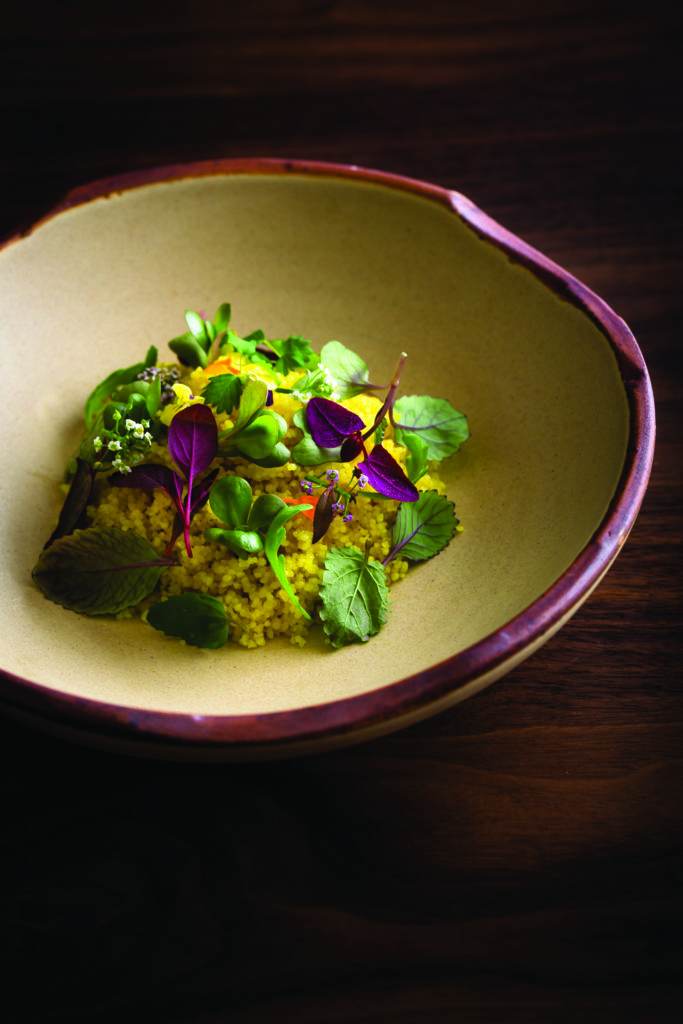
We were so pleased by this sublime and unforgettable experience—a tip of the hat to the chef and gracious kudos to Susanna and Cesar, our kind and knowledgeable servers.
When visiting Mourad it is advised to allot at least two and a half hours. When we finally stood to get our coats, it dawned on us just how big the restaurant is, with its Moroccan-patterned tile floors and soaring, spherical lighting sculptures. The 160-seat capacity is elegantly apportioned between three spacious rooms on two distinct floors surrounded by 20-foot ceilings.
The immaculate kitchen is openly visible from the second floor, with a staff of about 30. In the foyer a lengthy wooden bar wraps around to create a spacious cocktail cove. Above is an elegant glass-encased wine mezzanine. Despite its Ali Baba–cave scale, Mourad is magically intimate, with booths and tables comfortably spaced to ensure privacy.
Thankfully, the acoustic engineers went to exceptional lengths to create a muted aural soundscape. Throughout our visit we could hear mild table talk, but it never interfered with our own conversation.
If you’re venturing into SF’s haute cuisine spectrum we recommend Mourad—the idyllic spot for a romantic meal or special occasion. But don’t be surprised if reservations become increasingly difficult to obtain. The rumor is that Mourad is poised to earn its second Michelin star—one we feel is clearly visible on the horizon.
Roy Strassman is a reviewer at large for Common Ground and a senior practitioner of Hellerwork-based Structural Integration, a system of deep-tissue structural bodywork. RoyStrassman.com
Rob Sidon is publisher and editor in chief of Common Ground.